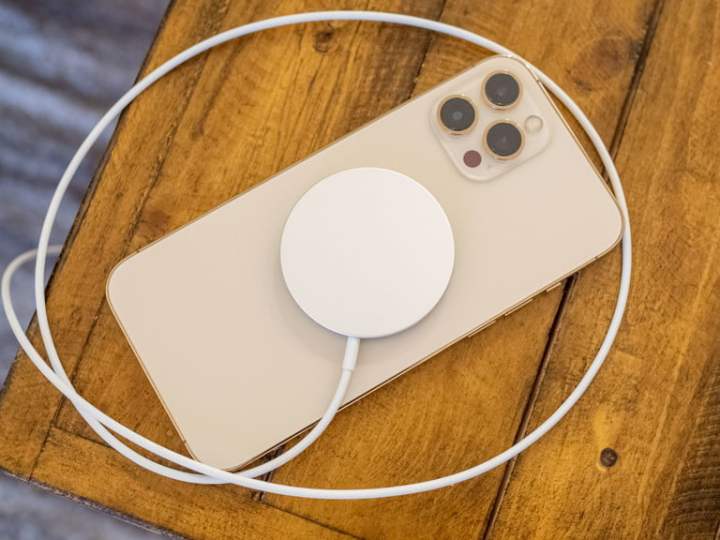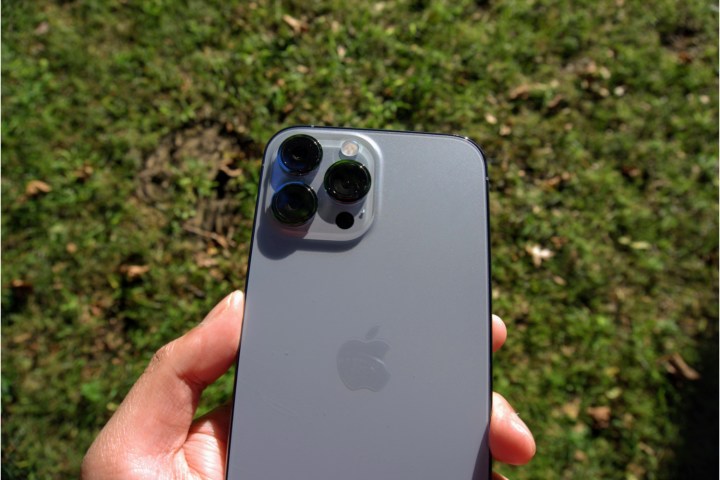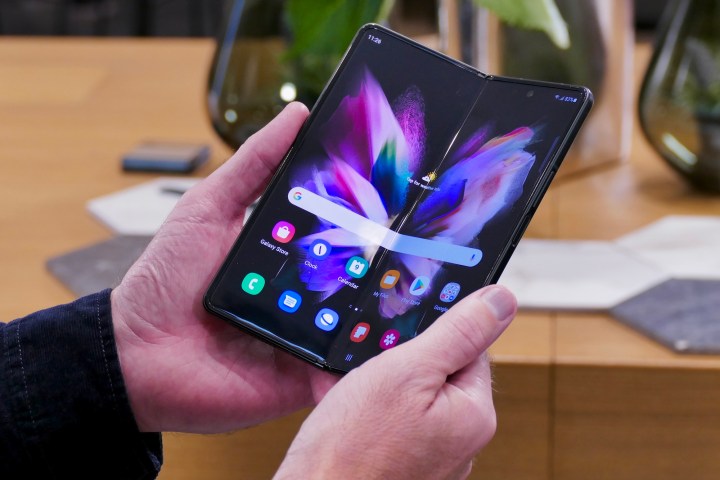If you want an Apple smartphone, the iPhone 13 Pro Max is pretty much where it’s at right now. Flaunting newly improved camera lenses, a beautiful 120Hz refresh rate, a more long-lasting battery, the new A15 Bionic chip, and the choice of having a massive 1TB in storage, it gets nearly everything right. However, while it may be the best — and most deluxe — Apple smartphone available at the moment, Samsung fans may probably argue that it’s not the best phone overall when other manufacturers and operating systems are taken into account.
In particular, one of the best Samsung devices out now is the Galaxy Z Fold 3. As the third-generation Samsung foldable, it almost perfects the concept of a folding phone, incorporating a more durable hinge mechanism and better durability while also offering great performance, a big potential for multitasking, and some very solid cameras.
While both phones are different in their own particular ways, they both lay a claim to being luxury flagships. The question is: Which one is the best device overall? We arrive at an answer to this question by comparing each phone’s specs, performance, designs, displays, cameras, and special features. This should help you decide which is the deluxe smartphone for you.
Specs
| Samsung Galaxy Z Fold 3 | iPhone 13 Pro Max | |
| Size | Unfolded: 128.1 x 158.2 x 6.4mm (5.04 x 6.22 x 0.25 inches)
Folded: 67.1 x 158.2 x 16.0mm (2.64 x 6.22 x 0.63 inches) |
160.8 x 78.1 x 7.7mm (6.33 x 3.07 x 0.30 inches) |
| Weight | 271 grams (9.56 ounces) | 240 grams (8.47 ounces) |
| Screen size | Main: 7.6-inch Dynamic AMOLED 2X (120Hz)
Cover screen: 6.2-inch Super AMOLED 2X (120Hz) |
6.7-inch Super Retina XDR OLED |
| Screen resolution | Main: 2208 x 1768 pixels (374 pixels per inch)
Cover screen: 2268 x 832 pixels (387 pixels per inch) |
2778 x 1284 pixels (458 pixels per inch) |
| Operating system | Android 11, One UI 3.1 | iOS 15 |
| Storage | 256GB, 512GB | 128GB, 256GB, 512GB, 1TB |
| MicroSD card slot | No | No |
| Tap-to-pay services | Google Pay, Samsung Pay | Apple Pay |
| Processor | Exynos 2100 (global), Qualcomm Snapdragon 888 (USA) | Apple A15 Bionic |
| RAM | 12GB | 6GB |
| Camera | Rear main: 12-megapixel ultrawide, 12MP wide-angle, and 12MP telephoto rear
Front main screen: 4MP under-display Cover screen: 10MP |
Triple lens 12MP wide, 12MP ultrawide, and 12MP telephoto rear (and LiDAR sensor)
12MP front |
| Video | 4K at 60 fps, 1080p at 240 fps, 720p at 960 fps, HDR10+ | 4K at 60 fps, 1080p at 240 fps, Dolby Vision HDR |
| Bluetooth version | 5.1 | 5.0 |
| Ports | USB-C | Lightning |
| Fingerprint sensor | Yes, side-mounted | No, Face ID |
| Water resistance | IPX8 | IP68 |
| Battery | 4,400mAh
Fast charging (25W, charger not included) Fast wireless charging (10W) Reverse wireless charging (4.5W) |
4,373Ah
Fast charging (20W sold separately) MagSafe wireless charging (15W) Qi magnetic fast wireless charging (7.5W) |
| App marketplace | Google Play Store | Apple App Store |
| Network support | All major carriers | All major carriers |
| Colors | Mirror Purple, Mirror Black | Graphite, gold, silver, Sierra Blue |
| Price | $1,800 | $1,099 |
| Review score | 4 out of 5 stars | Hands-on |
Design, display, and durability

The iPhone 13 Pro Max continues with the flat-edge design of the iPhone 12 series, making it look akin to the iPad Pro or (going back further) the iPhone 5S. The only noticeable difference it brings in, compared to its immediate predecessor, is a front-facing notch that’s 20% narrower, given you fractionally more touchscreen real estate to work with.
Other than that, its design is arguably pretty conservative. At the very least, there’s no doubt it’s overshadowed by the Samsung Galaxy Z Fold 3, which, as a foldable phone, still carries a substantial novelty factor. More importantly, it does indeed look very sleek and sophisticated, both as a folded-out, tablet-like device and as a folded-in, narrower smartphone. Its oval-shaped rear camera module blends in nicely with its body, and while its overall design isn’t much of a departure from the Z Fold 2, the rareness of good foldable phones makes it more striking than the iPhone 13 Pro Max.
When comparing the quality of the 13 Pro Max’s display with the Z Fold 3’s main (foldable) screen, Apple’s device just about comes out on top. Its 6.7-inch screen has a resolution of 2778 x 1284 pixels, working out at 458 pixels per inch. By contrast, the Z Fold 3’s main 7.6-inch display packs 2208 x 1768 pixels, which makes for a slightly less dense 374 ppi. Both phones also offer a refresh rate of 120Hz, thereby providing a very smooth visual experience. That said, with more pixels per inch, the 13 Pro Max’s screen does look a little sharper and more vivid, although the larger size of the Z Fold 3’s screen may potentially turn a few more heads.
At the same time, the Z Fold 3 does obviously provide a second, 6.2-inch cover screen, which also supports a 120Hz refresh rate and carries 387 pixels per inch. It’s arguable that this makes it superior in the display department, if only because you have more display to work with.
While the iPhone 13 Pro Max comes with an IP68 rating, the Z Fold 3 has been awarded an IPX8 classification. What this means is that it hasn’t been tested for resistance against dust (hence the “X”) but has received a water-resistance rating. In comparison to previous models, the Z Fold 3 also includes “sweeper” bristles along its hinge, which should keep infiltration of dust to a workable minimum.
Given that it lacks the iPhone’s durability, we’re calling this round a tie, despite the Z Fold 3’s superior design.
Winner: Tie
Performance, battery life, and charging

If you’re in the United States, the Samsung Galaxy Z Fold 3 houses the Qualcomm Snapdragon 888, which uses a 5nm manufacturing process to pack in more transistors and make it more powerful than the previous 7nm models. The iPhone 13 Pro Max also uses a 5nm chip, the Apple A15 Bionic, which despite possessing only modest improvements over the A14, is just about more powerful than its predecessor. This means it is one of the most powerful smartphone chips in operation right now, and with 6GB of RAM, it will handle pretty much every game and app out now, while also letting you multitask without friction. So too will the Snapdragon 888 and the Z Fold 3, which harnesses 12GB of RAM, making it just as powerful as the 13 Pro Max (iPhones need less RAM).
Neither the iPhone 13 Pro Max nor the Z Fold 3 comes with a microSD card slot, although assuming that you don’t snap photos like your life depended on it, both provide enough internal memory to last. This is particularly the case with the iPhone 13 Pro Max, which starts with a 128GB model but can be bought (for an extra $500) with 1TB of memory, which is probably inexhaustible for the average user. The Z Fold 3 starts with 256GB of internal storage but can be had with 512GB of memory, for an extra $100.
The Z Fold 3 comes with a larger 4,400mAh battery, compared to a 4,373mAh battery on the iPhone 13 Pro Max. When you factor in the Z Fold 3’s 7.6-inch main screen and its second cover screen, this 4,400mAh doesn’t last as long as you might think. In fact, our review found you may nearly deplete its entire battery in a single day if you’re a heavier user, while the iPhone 13 Pro Max is likely to get you into a second day. Combined with the option of bumping its internal storage up to 1TB (as expensive as this option is), this superior battery life gives Apple’s phone the win in this round.
Winner: iPhone 13 Pro Max
Cameras

The iPhone 13 Pro Max’s triple-lens rear camera setup boasts new hardware this time around. It raises its aperture values to f/1.5 for the wide lens and f/1.8 for the ultrawide lens, while it adds a 77mm-equivalent telephoto camera with an f/2.8 aperture, which gives you a 3x optical zoom. These updates represent an advance over the already-great iPhone 12 Pro Max, meaning that the 13 Pro Max takes some seriously good photos. Basically, the widened apertures on the wide and ultrawide lenses allow for the capture of more light, which in turn results in more detail and vibrancy. By contrast, the narrowed aperture on the telephoto lens allows for a superior zoom, while all three lenses are compatible with Night mode.
As for the Z Fold 3, it also offers a triple-lens rear camera setup, featuring a 12MP wide lens, a 12MP ultrawide, and a 12MP telephoto lens. Generally, it takes very impressive photos under most conditions, although it suffers a little in low-light environments, something which cannot be said for the 13 Pro Max. This is the main difference between the two phones, and it’s something that’s not compensated for by the fact that the Z Fold 3 provides a 4MP camera under its main (foldable) screen, as well as a 10MP camera on its cover screen.
Both phones let you capture 4K video at 60 frames per second, although one advantage the iPhone 13 Pro Max has is that it introduces a Cinematic Mode. This lets you seamlessly shift focus from the foreground to the background, making for very professional-looking shots. Together with the better all-around rear camera, this provides Apple’s phone with another win.
Winner: iPhone 13 Pro Max
Software and updates

The iPhone 13 Pro Max runs on iOS 15, Apple’s latest operating system. This adds a more intelligent Notification Summary, a new Focus mode for avoiding distractions (from work, play, or sleep), and an expanded ability to share media using Messages and FaceTime. Meanwhile, the Z Fold 3 uses One UI 3.1, Samsung’s very own mod of Android 11. It provides greater scope for customization and versatility than stock Android, although it also provides a fairly slick and streamlined experience.
While we’re not going to be drawn into the eternal iOS versus Android debate, there’s little doubt that Apple phones still have the edge in terms of updates. Because it’s an Apple phone running Apple software, the 13 Pro Max will benefit from quicker updates and from more of them. As for the Z Fold 3, it may not receive Android updates as readily or for as long into its lifespan. Because of this, the iPhone scrapes a close win in this round.
Winner: iPhone 13 Pro Max
Special features

It’s clear what the Z Fold 3’s main special feature is: It folds out, transforming from a more traditional smartphone to something that looks like a tablet. This functionality makes it more versatile than the average smartphone, with the device particularly suited to multitasking and productivity. For example, the ability to use multiple apps at once means you can do such things as watch a lecture on YouTube while taking notes in another app. At the same time, the device is compatible with the S Pen, meaning it may be one of the best phones available right now for professionals.
As with the iPhone 13 Pro Max, the Z Fold 3 also supports 5G. This encompasses the basic sub-6Hz frequency range as well as the faster mmWave band, meaning you can get the fastest possible speeds on both devices. They’re also supported by all major carriers, so assuming that you live close to a 5G network, they’ll have you surfing the web at ultra-speeds in no time.
Apart from 5G, the iPhone 13 Pro Max doesn’t have too much to write home about, despite getting all the fundamentals spot-on. Indeed, the only really new special feature is the aforementioned Cinematic Mode, the appeal of which may be limited to cinephiles. There is also the Ceramic Shield glass it uses in its display, which makes it four times more durable than the average smartphone display. However, this was also present in the iPhone 12 series, so it’s hardly new, something that can also be said for such returning features as Face ID and Memojis.
Winner: Samsung Galaxy Z Fold 3
Price and availability
The iPhone 13 Pro Max starts at $1,099 for the 128GB model but rises as high as $1,599 for the 1TB version. All major carriers support it, while it’s also available from most major retailers.
The Samsung Galaxy Z Fold 3 starts at $1,800 for the 256GB model, while the 512GB version costs $1,900. As with the iPhone, it’s also supported by all major carriers and can be bought widely online and IRL.
Overall winner: iPhone 13 Pro Max
While it certainly isn’t the most novel phone in this head-to-head, the iPhone 13 Pro Max is definitely the best overall. Its superior battery, increased memory, more versatile cameras, and more reliable software support make it a better device than the Samsung Galaxy Z Fold 3. Sure, the Z Fold 3 may look more striking and be better for work, but its weaker battery life and not-quite-as-great cameras put it at a slight disadvantage. That said, if you prefer Android, and/or if you really want a folding phone, it certainly is a great buy.



